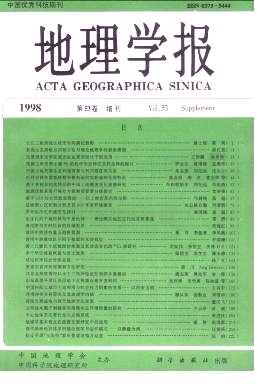Zhang Xiugui
Many researchers studied about the process of land formation of Pudong Area in Shanghai in the last 50 years. Tan Qixiang published 4 papers on this topic from 1966 to 1982. Those papers set a well knit background for further examination on this topic. Meanwhile, other researchers from different disciplines also worked on it, and got a great progress. Up to now, many conclusions are kept under difference. This paper, based on the relationship of coastline and sea walls, tries to discuss the process of land formation of Pudong Area in Shanghai, and aims at some new ideas on this topic. The main conculsions are as follows: (1) At 1700 aBP, Pudong coastline was near the Xiasha sand belt. In Pudong Area, there is an intermittent and NNW direction sand belt along Beicai, Zhoupu, Xiasha and Hangtou. This sand belt connects its northern part (Shengqiao to Yuepu sand belt), and forms a historical coastline which is parallel to Gangshen sand belt. In 1975, an ancient settlement site Yanqiao formed at the beginning of Tang Dynasty to Song Dynasty was discovered, which just located at the west side of the Xiasha sand belt. This site shows a reproachless evidence that the Xiasha sand belt and the land on its west were formed before the beginning of Tang Dynasty. For considering the unearthed cultural relics from the land west of Xiasha sand belt, especially the ancient map of Wujun Kangcheng Diyutu which was painted in AC 322, the coastline along Xiasha sand belt should naturally extend to Island Tanhushan and then to Island Wangpanshan. It was recorded that Wangpanshan was an site for army garrison in the early days of East Jin Dynasty (the early period of the 4th century). So, based on such evidences, it can be considered that the coastline along Xiasha sand belt was formed before the 4th century with a 1700 year history. The former standpoints, that the coastline in the 4th century was near the eastern part of Gangshen sand belt and the Jiu sea wall and Xiasha sea wall were along Xiasha sand belt, are not correct. (2) At 1000 aBP, the coastline was advanced eastward to the line along today’s Lihu sea wall. Many ancient sites and cultural relics belonging to Song Dynasty were unearthed in the land west of Lihu sea wall. And based on the records described in Jiadan’s Shuilishu (Irrigation Book) , it can be considered that the coastline in the middle of the 11th century was near the line along Lihu sea wall. The sea level relatively rose in the Northern Song Dynasty, and it impacted on Shanghai area. Western low land of Shanghai sank to be lakes and marshes, and southern coastline countermarched extensively and northern coastline moved southward. The coastline in the eastern part of Pudong Area kept relatively in stabilization when it supported by the sediment of Changjiang River. Under the threat of sea level rise and tide damage, the head of Huating county Wuji led a project for constructing a sea wall along coastline. The northeast part of this sea wall is today’s Lihu sea wall. The Jiu sea wall recorded in Yunjianzhi (county annals written in Southern Song Dynasty) and the Xiasha sea wall recorded in Shanghaizhi (county annals written in Ming Dynasty) were alias of Wuji’s sea wall or the reconstructed part of it. So, it is not correct in the former viewpoints that the Lihu sea wall was constructed in the early days of Tang Dynasty, or the middle of Tang Dynasty, or the end of Tang Dynasty, or the middle of Southern Song Dynasty. (3) At 600 aBP, the coastline in Pudong Area was moved to the linenear the East west sand belt. The coastal area at Nanhui Mouth southeast of the East west sand belt was formed in the last 600 years, and this conclusion was based on the data of the 14 C dating from the East west sand belt. The process of land formation in the last 600 years is much lower than before. One of the main reasons is that the sediment from Changjiang River made contribution to enlarging the Island Chongming and forming the islands of Changxing and Hengsha and other sand beaches.
